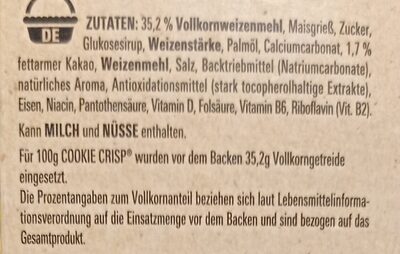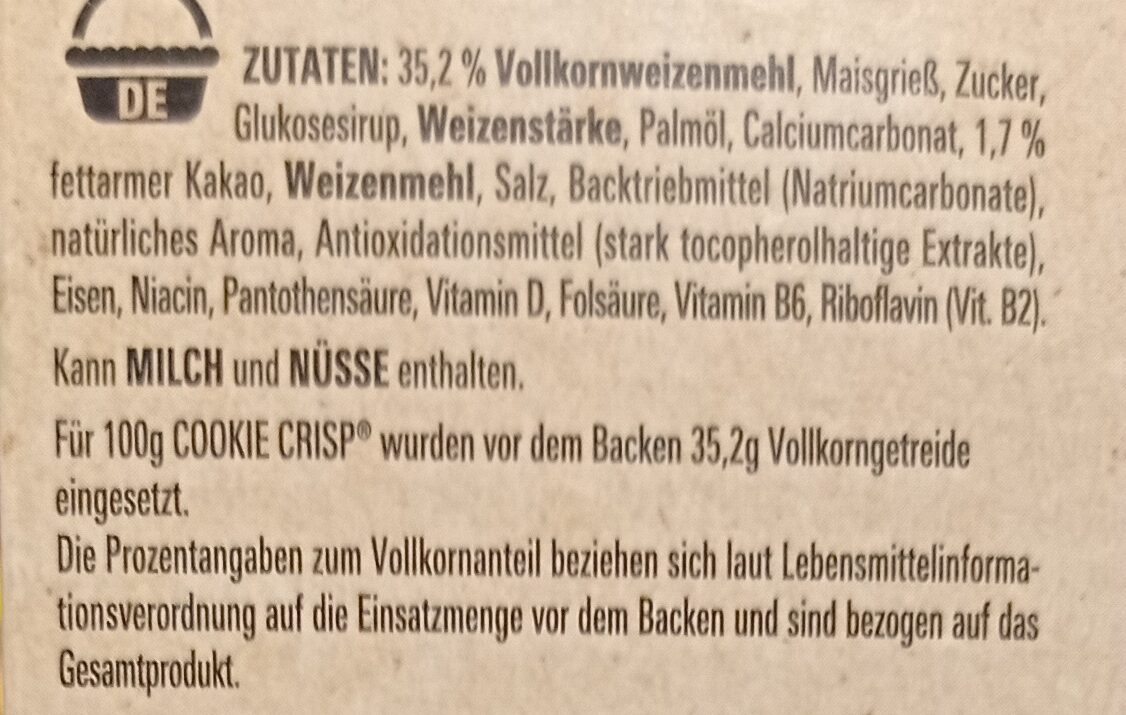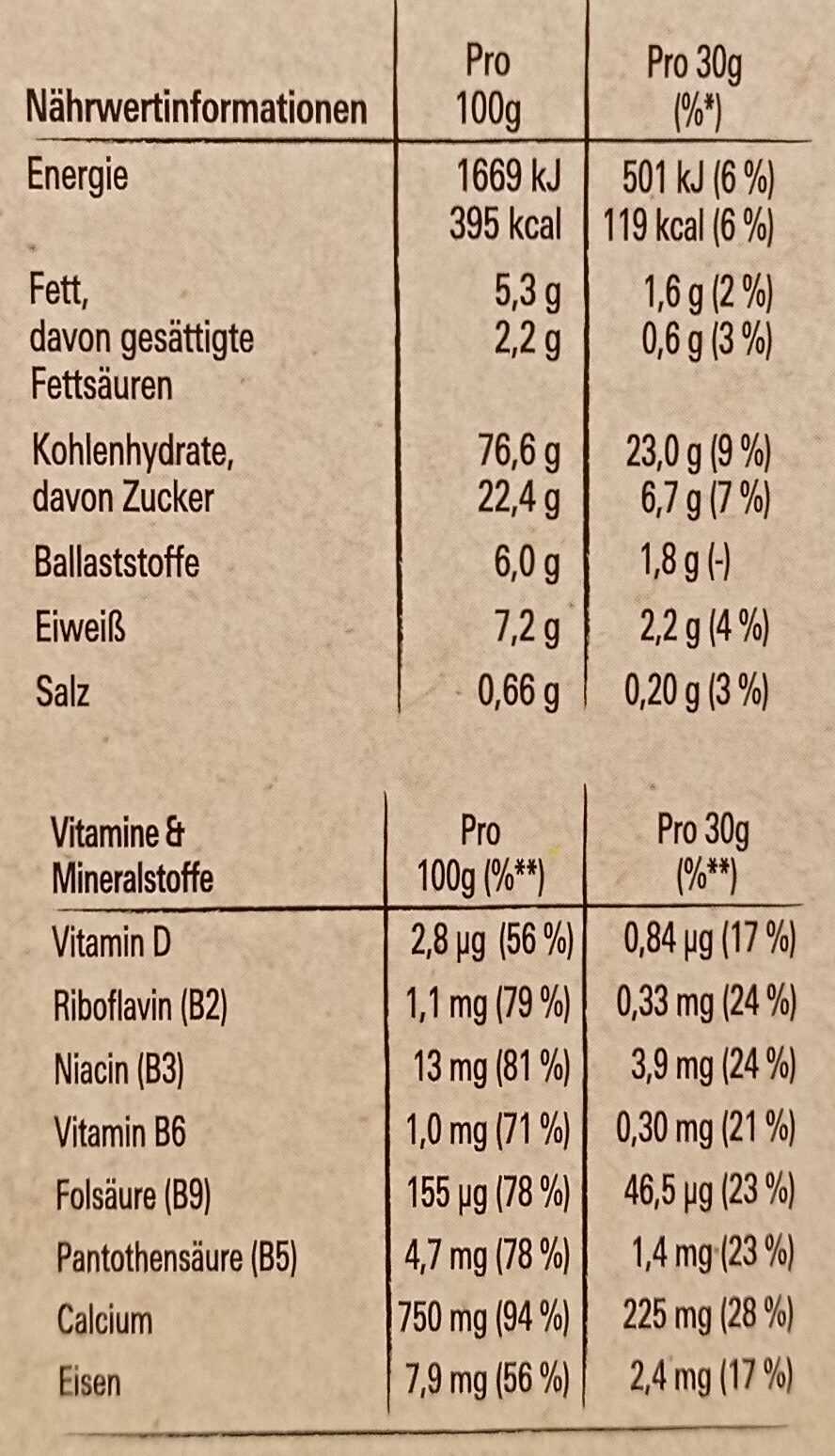Cookie Crisp - Nestlé - 1pcs
This product page is not complete. You can help to complete it by editing it and adding more data from the photos we have, or by taking more photos using the app for Android or iPhone/iPad. Thank you!
×
Barcode: 5011546457277 (EAN / EAN-13)
Quantity: 1pcs
Brands: Nestlé
Categories: Plant-based foods and beverages, Plant-based foods, Breakfasts, Cereals and potatoes, Cereals and their products, Breakfast cereals, Chocolate cereals, Extruded cereals
Labels, certifications, awards: No artificial flavors, Nutriscore, Nutriscore Grade B, Nutriscore Grade C
Stores: Rewe
Countries where sold: Austria, France, Germany, Switzerland
Matching with your preferences
Environment
Carbon footprint
Packaging
Transportation
Threatened species
Report a problem
Data sources
Product added on by openfoodfacts-contributors
Last edit of product page on by moon-rabbit.
Product page also edited by date-limite-app, foodrepo, gmlaa, hangy, inf, itsjustruby, jusdekiwi, kiliweb, kommx, mannx, packbot, prepperapp, roboto-app, scanbot, segundo, tacite, tacite-mass-editor, yuka.WTZsUUFJc3VnTmNPaXNZRHJ6UC9wY2hZK0s2cFptQ3hMZWd0SVE9PQ.
Last check of product page on by moon-rabbit.










